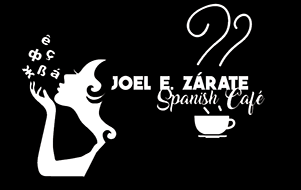Unit 3 - Grammar Lesson
Gender
In Spanish, many words can be masculine or feminine, like nouns and adjectives.
For example, the word fruta (fruit) is feminine, but the word, queso (cheese) is masculine.
(To explain it very simplistically for now) The general rule is that if a word ends in -a, like fruta, casa (house) or comida (food) then you can assume that it is most likely feminine
If a word ends in -o, like queso, libro (book) then you can assume that it is most likely masculine
I say most likely because there are exceptions, but the majority of words follow this rule. Little by little, you’ll learn the exceptions.
Plurals
Now in Spanish, it is easy to make plurals. The general rule is to add an -s at the end of the word. Now, there are exceptions, but this is the general rule. For now, this is all you need.
Examples:
fruta = frutas
casa = casas
queso = quesos
Some nouns in Spanish end with -e, and these words don’t change. For these nouns, you just have to learn their gender as you encounter and interact with these. For some of these words, you indicate gender by using the define article.
For example:
estudiante (student)
la estudiante (female student)
el estudiante (male student)
Articles
Articles are used with nouns, and nouns are people, objects, ideas, animals or places.
To talk about articles, I’m going to use the English articles to make it easier.
In English, we have the articles the, a, an, and some.
The is called the definite article and we can say something like:
the book, the books or the house, the houses
A, an, and some are called the indefinite articles and we can something like
a book, some books or a house, some houses
Now in Spanish, for “the”, we have four possibilities
la = singular, feminine
las = plural, feminine
el = singular, masculine
los = plural, masculine
la fruta = singular, feminine
las frutas = plural, feminine
el queso = singular, masculine
los quesos = plural, masculine
Now for the articles, “a, an, some”, we also have four possibilities
una = singular, feminine
unas = plural, feminine
un = singular, masculine
unos = plural, masculine
una casa = singular, feminine
unas casas = plural, feminine
un libro = singular, masculine
unos libros = plural, masculine
The concept of gender is important because in Spanish we have what we call “agreement.” What that means is that if a noun is masculine or feminine, the article and adjectives agree with gender.
Examples:
Casa (house) = feminine, singular
White house
La casa blanca
Libro (book) = masculine, singular
Black book
El libro negro
Uvas (grapes) = feminine, plural
Small grapes
Las uvas pequeñas
Carros (car) = masculine, plural
Black cars
Los carros negros
Now, that was the grammar lesson for this unit. If you are wondering when to use articles, it is tricky to explain because there are many irregularities.
For now, the only generalization you can use is that if in English you need an article in your sentence, then in Spanish you can use the article. When you are talking about something in general, then you need a definite article in Spanish. In this case, in English we don’t use a definite article.
For example:
Coffee has caffeine.
El café tiene cafeina.
Apples are delicious.
Las manzanas son deliciosas.
In California, houses are expensive.
En California, las casas son caras.
